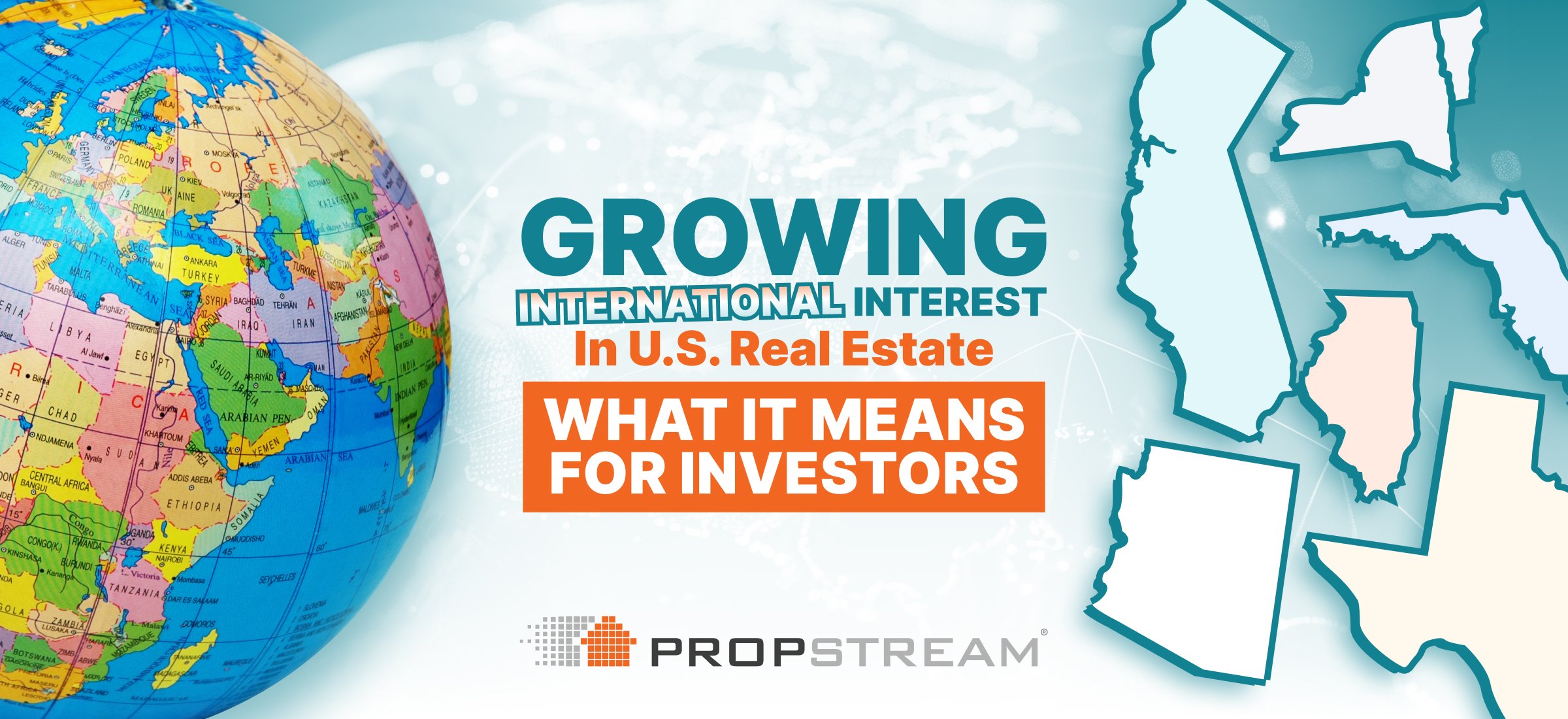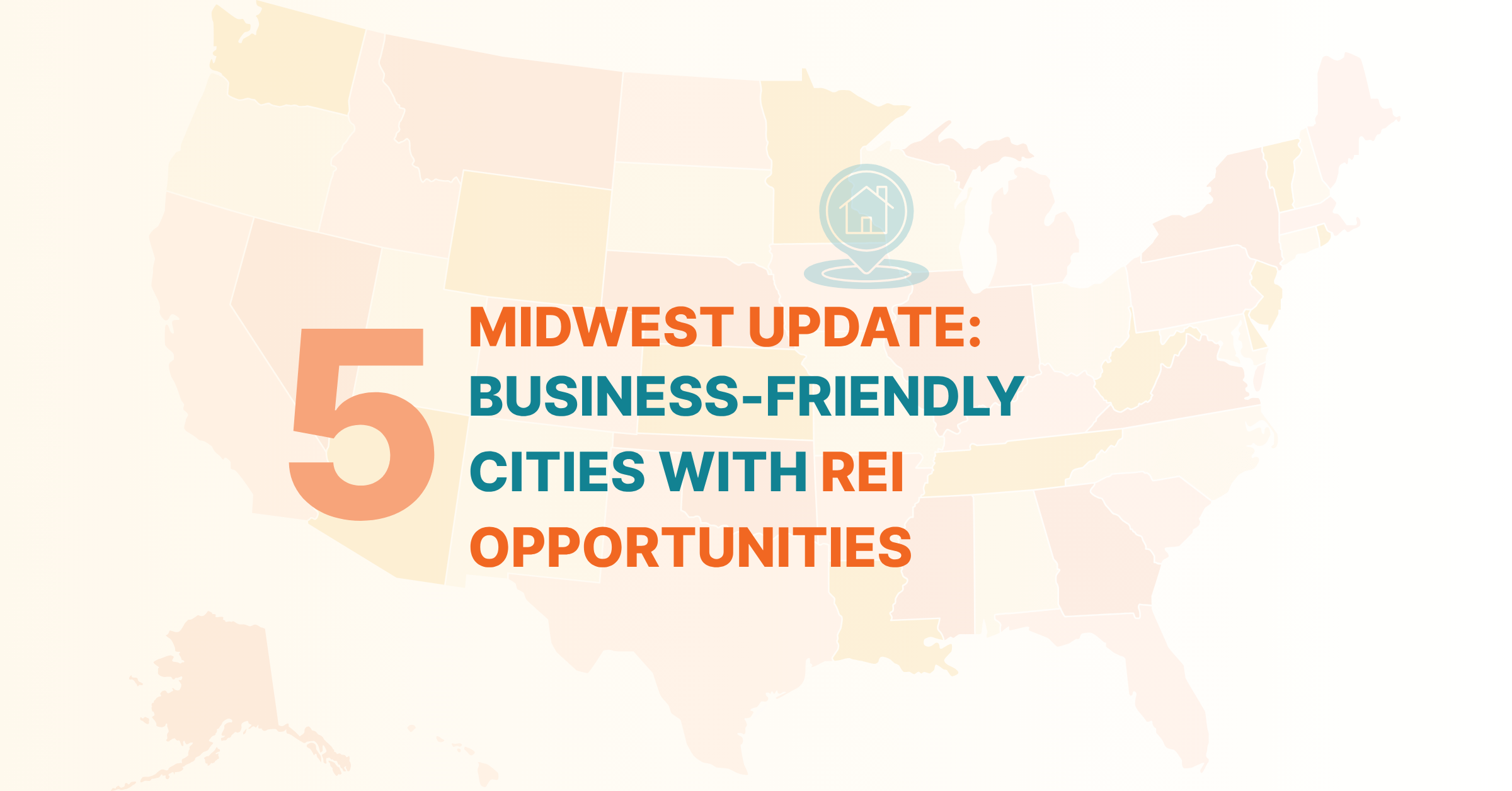Disclaimer: PropStream does not offer investing advice or make profit promises. This article is for educational purposes only. We recommend consulting financial professionals and/or doing your due diligence before investing in foreclosure property.
|
Key Takeaways:
|
A fresh wave of foreclosures is sweeping the country, and savvy investors should take notice. While the trend may signal deeper trouble in the housing market, it also presents opportunities to buy discounted properties while helping distressed homeowners.
Table of Contents |
U.S. Foreclosures Are on the Rise
In Q1 2025, there were 93,953 U.S. properties with a foreclosure filing (default notice, scheduled auction, or bank repossession), up 11% from the prior quarter. In April 2025 alone, there were 36,033 foreclosures, up 0.4% from the prior month and up 13.9% from a year ago.
“While levels remain below historical averages, the quarterly growth suggests that some homeowners may be starting to feel the pressure of ongoing economic challenges,” said Rob Barber, CEO at ATTOM, in a recent report.
These economic challenges may include stubbornly high mortgage rates, rampant housing inflation, growing consumer debt, and the rising cost of living. As homeowners increasingly feel these financial pressures, they are more likely to default on their mortgages.
Foreclosure Rates by State
Nationally, one in every 1,515 housing units had a foreclosure filing in Q1 2025. However, some states fared worse than others.
States with the highest foreclosure rates included Delaware (one in every 761 housing units with a foreclosure filing), Illinois (one in every 857 units), Nevada (one in every 874 units), Indiana (one in every 976 units), and South Carolina (one in every 1,021 units).
Here’s a breakdown of foreclosure rates across all 50 states—ranked from highest to lowest—along with the percentage changes from the previous quarter and year:
| Rate Rank | State Name | Total Properties with Filings | 1/every X Housing Units (Foreclosure Rate) | % Change Q4 2024 | % Change Q1 2024 |
|---|---|---|---|---|---|
| 1 | Delaware | 602 | 761 | 89.91 | 19.21 |
| 2 | Illinois | 6,355 | 857 | 48.69 | 15.76 |
| 3 | Nevada | 1,496 | 874 | 16.51 | 11.64 |
| 4 | Indiana | 3,025 | 976 | 17.7 | 7.54 |
| 5 | South Carolina | 2,353 | 1,021 | 42.87 | -7.47 |
| 6 | New Jersey | 3,653 | 1,034 | 9.6 | -10.62 |
| 7 | Florida | 9,524 | 1,059 | 6.64 | -6.54 |
| 8 | Utah | 1,021 | 1,169 | 12.94 | 66.56 |
| 9 | Connecticut | 1,295 | 1,182 | 3.35 | -16.34 |
| 10 | Texas | 9,354 | 1,271 | 20.71 | 12.25 |
| 11 | Ohio | 4,135 | 1,275 | 1.65 | -18.25 |
| 12 | Maryland | 1,899 | 1,340 | -0.31 | -24.25 |
| 13 | Iowa | 1,057 | 1,350 | 14.77 | 12.09 |
| 14 | California | 10,701 | 1,358 | -3.29 | -5.33 |
| 15 | Arizona | 2,142 | 1,467 | 25.48 | 32.63 |
| 16 | Oklahoma | 1,137 | 1,551 | 26.19 | 28.62 |
| 17 | Michigan | 2,907 | 1,582 | -1.59 | -8.9 |
| 18 | Louisiana | 1,309 | 1,600 | 30.51 | 20.76 |
| 19 | Alabama | 1,439 | 1,610 | 24.59 | -1.98 |
| 20 | Pennsylvania | 3,539 | 1,633 | 10.8 | -4.87 |
| 21 | New York | 4,952 | 1,724 | -1.14 | -18.69 |
| 22 | Georgia | 2,558 | 1,753 | 23.87 | -5.92 |
| 23 | North Carolina | 2,658 | 1,812 | 26.15 | 10.61 |
| 24 | New Mexico | 472 | 2,012 | 11.58 | 32.58 |
| 25 | Maine | 363 | 2,057 | -2.68 | 9.34 |
| 26 | Colorado | 1,202 | 2,117 | 38 | 30.09 |
| 27 | Kentucky | 936 | 2,148 | 18.33 | 6.73 |
| 28 | Wyoming | 127 | 2,166 | 35.11 | 16.51 |
| 29 | Massachusetts | 1,370 | 2,200 | -8.79 | -30.1 |
| 30 | Minnesota | 1,061 | 2,375 | -1.67 | -7.74 |
| 31 | Arkansas | 573 | 2,413 | -9.05 | -6.98 |
| 32 | Virginia | 1,507 | 2,425 | 10.32 | 7.18 |
| 33 | Rhode Island | 190 | 2,551 | 13.77 | 14.46 |
| 34 | Tennessee | 1,163 | 2,662 | 14.36 | -5.14 |
| 35 | Alaska | 119 | 2,680 | 77.61 | 13.33 |
| 36 | Idaho | 288 | 2,697 | 0.7 | -9.15 |
| 37 | Missouri | 1,035 | 2,714 | -0.58 | 10.58 |
| 38 | Washington | 1,147 | 2,845 | 16.57 | 38.19 |
| 39 | Hawaii | 188 | 3,005 | 8.67 | -10.9 |
| 40 | Nebraska | 270 | 3,169 | 27.96 | 11.11 |
| 41 | Wisconsin | 845 | 3,255 | -4.3 | -4.95 |
| 42 | New Hampshire | 193 | 3,338 | 0 | -17.87 |
| 43 | Oregon | 501 | 3,670 | -7.22 | 1.42 |
| 44 | West Virginia | 219 | 3,925 | 16.49 | 8.42 |
| 45 | North Dakota | 91 | 4,119 | -18.75 | -2.15 |
| 46 | Mississippi | 298 | 4,473 | 3.11 | -30.86 |
| 47 | Kansas | 275 | 4,674 | -9.84 | 16.53 |
| 48 | Vermont | 45 | 7,490 | 9.76 | -19.64 |
| 49 | Montana | 62 | 8,435 | 19.23 | -13.89 |
| 50 | South Dakota | 20 | 19,945 | -53.49 | -61.54 |
| -- | District of Columbia | 282 | 1,263 | -12.96 | -25.2 |
| -- | U.S. Total | 93,953 | 1,515 | 11.37 | -1.46 |
States Ranked by Foreclosure Rate
State:
Rank:
Total Properties with Filings:
1/every X Housing Units (Foreclosure Rate):
% Change Q4 2024:
% Change Q1 2024:
What This Means for Investors
As an investor, an uptick in foreclosures can have many implications. Consider the following:
Increased Inventory of Discounted Properties
When foreclosures are on the rise, distressed sales usually follow. This is because banks that repossess properties typically don’t want to hold onto them. Instead, they often try to auction them to the highest bidder to recoup their losses, giving investors a chance to buy at a discount.
That said, you can help struggling homeowners avoid foreclosure by buying their homes during the pre-foreclosure phase (the period after they’ve defaulted on their mortgage but before the lender takes possession). That way, you can ease their financial burden while buying a property at below market value. It’s a win-win.
Downward Pressure on Local Home Values
A spike in foreclosures can drag down neighboring property values. This is because most home valuations are based on comparable sales, or comps. For example, if many homes in a neighborhood sell well below market value due to foreclosure, appraisers may factor those distressed sale prices into their assessments of nearby properties.
As a result, now may be a good time to buy not just foreclosures, but also affected homes nearby. If the market recovers, these properties could offer attractive returns as neighborhood values rebound.
More Renters in the Market
Many homeowners displaced by foreclosure become renters. This can inflate the number of renters in the market, raising rental demand and putting upward pressure on rental rates.
Investors can support this transition by providing quality long-term, short-term, or mid-term rental housing, including both single-family and multifamily rentals.
More Regulatory and Legal Risks
Investing in foreclosures can come with unique legal challenges. For example, foreclosure and pre-foreclosure properties may have liens, back taxes, and other title issues. As a result, you must be extra thorough when performing your due diligence. Otherwise, you could get stuck with a property that’s more trouble than it’s worth.
Similarly, you must understand local foreclosure laws. For example, some states have redemption periods that allow the former owner to reclaim the property even after the sale, which could cause you to lose your investment if you’re not aware of the timeline.
Use PropStream to Find Pre-Foreclosure Leads
Instead of letting the current rise in foreclosures scare you away from real estate, consider the potential investment opportunities. With PropStream, you can find pre-foreclosure property leads in minutes. Simply search your market and apply the pre-foreclosure filter. From there, you can skip-trace homeowners’ contact information to make an offer.
You can also check PropStream Intelligence's Foreclosure Factor to predict the likelihood of foreclosure on a property.
By taking a distressed homeowner’s property off their hands, you can help them avoid the significant credit damage caused by a foreclosure. Meanwhile, you can often buy the property at a low price since these owners are highly motivated to sell.
Try PropStream for 7 Days Free!
Frequently-Asked Questions (FAQs)
What is a foreclosure?
A foreclosure occurs when a homeowner defaults on their mortgage and the lender takes legal action to repossess and sell the property to recover the debt.
Why are foreclosures on the rise?
Foreclosures are increasing due to ongoing economic pressures like high mortgage rates, rising consumer debt, housing inflation, and the overall cost of living, which are making it harder for some homeowners to keep up with mortgage payments.
What is pre-foreclosure?
Pre-foreclosure refers to the period after a homeowner has missed mortgage payments but before the property is officially repossessed by the lender, offering a window for investors to negotiate a mutually-beneficial purchase.
How can I find pre-foreclosure properties?
You can use PropStream to search for pre-foreclosure leads in your target market. You can also use the platform’s “Foreclosure Factor” to predict the likelihood of foreclosure on a property within the next year.
Do foreclosure and pre-foreclosure properties always sell below market value?
Not necessarily. However, foreclosures often sell below market value since most lenders try to recover their losses as quickly as possible. As for pre-foreclosures, they often sell at a discount since distressed homeowners are highly motivated to sell.
What is the biggest risk of investing in foreclosures?
Foreclosures may come with hidden liens, repair needs, or legal complications. However, you can mitigate these risks by prioritizing due diligence and a thorough title search.
Subscribe to PropStream's Newsletter
Note on sources:
All foreclosure data and quotes taken from ATTOM’s Q1 2025 U.S. Foreclosure Market Report (unless otherwise cited)


